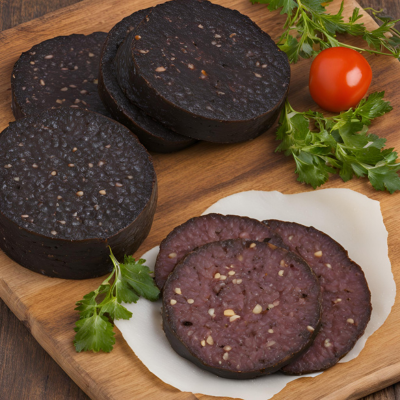This combination is then encased and boiled, creating a firm, savoury sausage that is typically sliced and fried or grilled before being eaten. The unique flavour of black pudding comes from its rich, earthy taste, which is balanced by the grainy texture of the oats or barley and the seasoning of herbs and spices like thyme, nutmeg, or black pepper.
Origins and Tradition
Historically, black pudding has been a staple in Scottish diets for centuries. It originated as a practical way to use every part of the animal during slaughter, particularly in rural farming communities where waste was frowned upon. Pigs were often slaughtered on farms, and the fresh blood would be used to create black pudding, a highly nutritious and filling food. This sausage became an essential part of a hearty meal, especially for labourers and farmers who needed high-energy, protein-rich foods.
In Scotland, black pudding is most commonly associated with breakfast and is a key component of the Full Scottish Breakfast. Along with items like eggs, bacon, sausage, and tattie scones, black pudding completes the traditional meal. Its deep flavor and distinctive texture make it an ideal companion to other savoury breakfast foods.
Modern Black Pudding
While it remains a breakfast favourite, black pudding has evolved beyond its humble origins and is now a feature in modern Scottish cuisine. Chefs often experiment with black pudding, incorporating it into various dishes such as starters, salads, pies, and even seafood pairings. One popular contemporary dish involves serving seared black pudding alongside pan-fried scallops, creating a fusion of rich, hearty flavours with delicate seafood notes.
Black pudding also comes in regional varieties. The most famous is Stornoway Black Pudding, produced on the Isle of Lewis in the Outer Hebrides. Stornoway Black Pudding has been awarded Protected Geographical Indication (PGI) status, meaning it can only be produced in that region to carry the name. Known for its high-quality ingredients and distinctively smooth texture, Stornoway Black Pudding is considered a delicacy, renowned for its rich flavour and reputation as one of the best black puddings in the UK.
Nutritional Value
Black pudding is not only rich in flavour but also in nutrients. It is a good source of protein and iron, primarily due to its blood content. This makes it a filling and energizing food. However, it also contains significant amounts of fat and salt, meaning it is typically enjoyed in moderation as part of a balanced diet.
Serving Suggestions
- Traditional Breakfast: Black pudding is commonly served fried or grilled alongside bacon, eggs, sausage, and tattie scones as part of a Full Scottish Breakfast.
- Modern Dishes: Some chefs use black pudding in innovative ways, such as pairing it with scallops or adding it to savoury pies and casseroles.
- Starters: Black pudding can be sliced and served as an appetizer, often accompanied by a fruity chutney or spicy sauce to balance its richness.
Cultural Significance
Beyond its culinary value, black pudding holds cultural significance in Scotland, representing the country’s agricultural roots and resourcefulness. Its connection to traditional farming practices and its enduring popularity through generations make it a symbol of Scottish heritage. Whether enjoyed in a rustic breakfast or as part of a refined modern dish, black pudding continues to be a beloved and versatile part of Scotland’s food culture.


